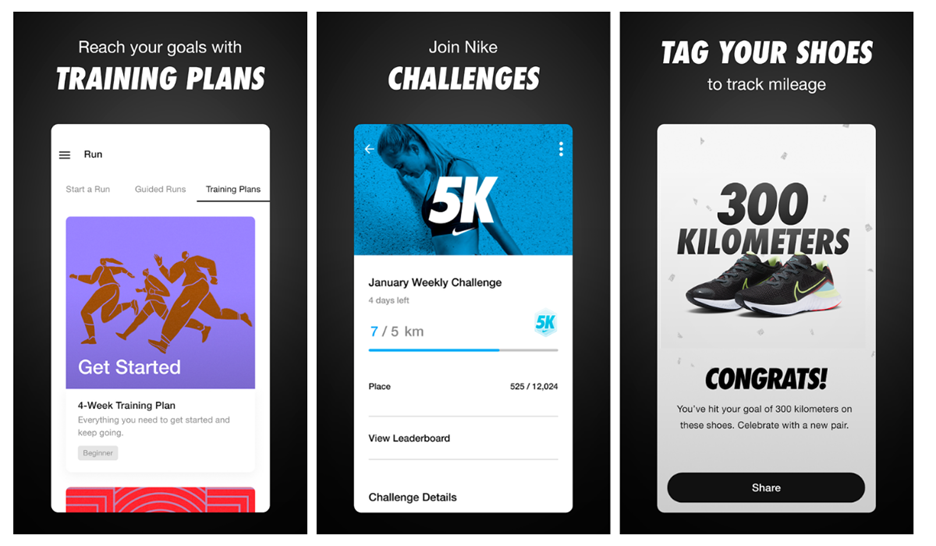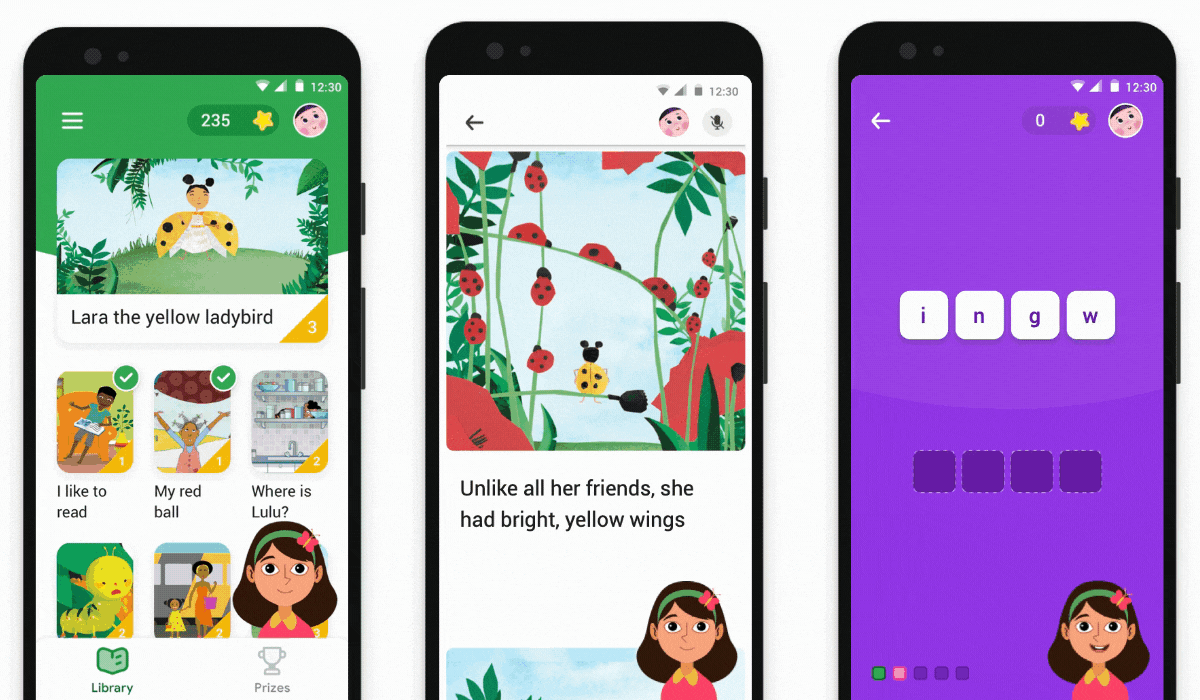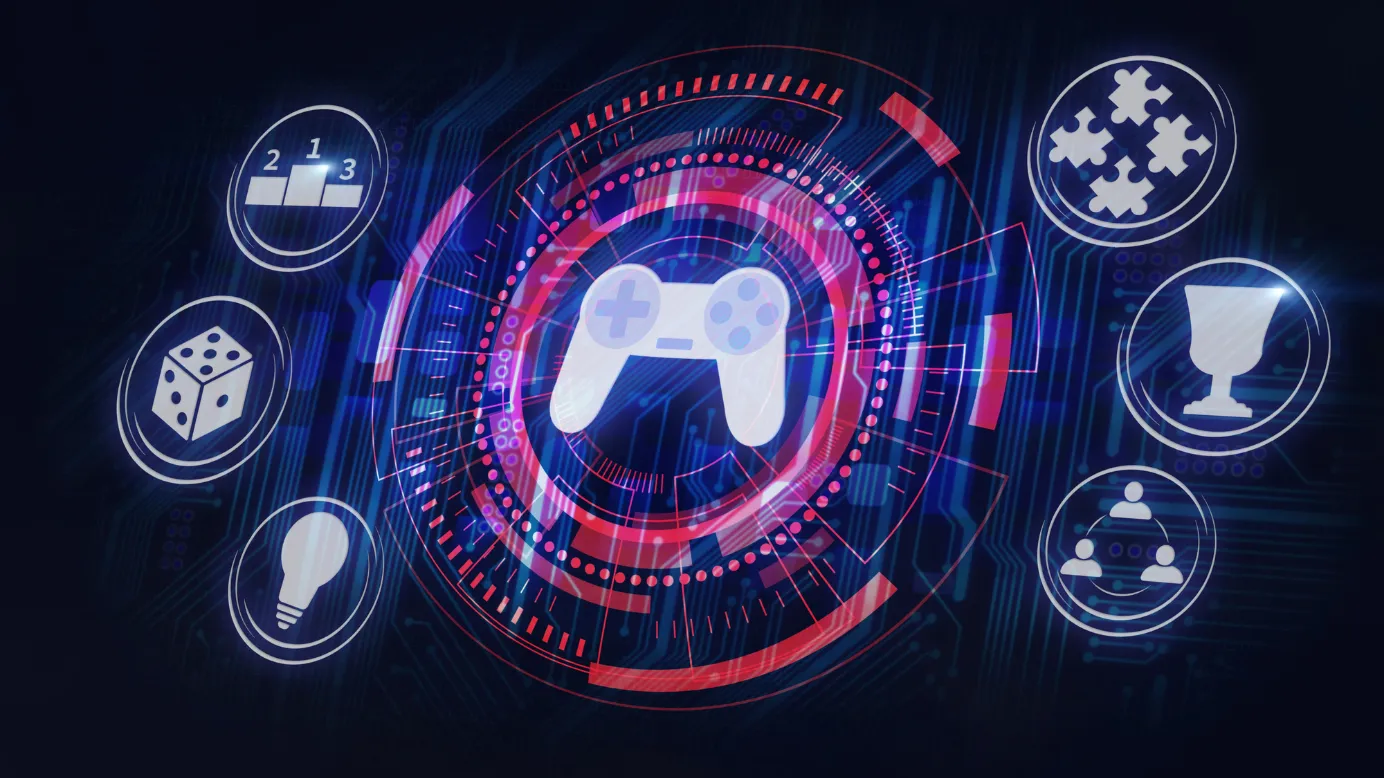Come gamificare l'apprendimento per migliorare i risultati di apprendimento
What is gamified learning and how to gamify learning effectively? Dive into the world of game mechanics like points, leaderboards, and challenges that can turn dull lessons into exciting journeys, improving engagement, motivation, and learning outcomes.
In questa pagina
- What is game-based learning?
- What is gamification?
- Difference between gamification and game-based learning
- Challenges with learning programs in different use-cases
- Gamification in learning
- Elements of gamification and how to use them in learning
- Principi chiave della gamificazione dell'apprendimento
- Examples of brands using gamification & GBL (Game-Based Learning) in their applications
- How leveraging LMS integrations can save time and streamline your business
Imagine a world where every challenge earns you rewards, every task completed is applauded, and you unlock new levels just by pushing your limits. Sounds familiar? That’s the thrill of playing a game.
We’ve all experienced the joy of gaming—chasing points, clearing hurdles, and striving to win. What keeps us hooked? Three things: engagement, interest, and involvement.
When you're truly engaged, you give your best—and that energy is powerful, whether in personal growth or learning. Now, imagine applying that same game-like experience to something traditionally dull—like learning. The impact? Game-changing.
That’s the power of gamification—a proven strategy embraced by businesses, schools, and organizations to make learning and growth more exciting and effective.
Detto questo, cerchiamo di capire i dettagli dell'apprendimento basato sui giochi e della gamification, le sfide da affrontare per ottenere il coinvolgimento nei vostri programmi di apprendimento, come l'apprendimento incentivato può superare i punti dolenti e altro ancora.
What is game-based learning?
Game-based Learning (GBL) is an active learning approach that uses games to teach specific skills and achieve defined outcomes. It makes learning fun and engaging by providing a safe space to apply concepts—like stock trading simulations in economics. GBL is now widely used in corporate training to build skills in areas such as customer service, tech, and teamwork.
What is gamification?
Gamification is the process of incorporating game mechanics or elements into an overall experience to boost enjoyment or engagement. (Source: Mind Research Institute)
La gamification consiste nell'aggiungere elementi di gioco ad attività non di gioco per innescare comportamenti specifici dell'utente. La gamification trasforma un particolare processo di apprendimento in un gioco. Utilizza elementi di gioco e meccaniche di gioco da applicare ai corsi di apprendimento per coinvolgere e motivare gli studenti.
Interestingly, any activity can be gamified, and it isn’t just limited to learning. From fitness apps to finance platforms, gamified learning strategies are showing up everywhere.
Esempi di meccaniche di gioco sono:
- Punti
- Premi
- Badge per i risultati
- Barre di avanzamento
- Classifiche
- Livelli/quiz
Interestingly, any activity can be gamified, and it isn’t just limited to learning. That’s why things that you use on a day-to-day basis—from fitness apps to financial apps to your LinkedIn pages—everything is gamified to boost user participation and increase engagement.
Difference between gamification and game-based learning
While Game-Based Learning (GBL) turns the entire learning process into a game, Gamification uses games as a part of the learning process.
Organizations are increasingly adopting gamified learning to boost retention, improve performance, and make content stickier.
La differenza principale tra GBL (Game-Based Learning) e Gamification è l'inclusione di meccaniche di gioco nel contenuto della formazione. Poiché il GBL integra entrambi, il gioco è in realtà la formazione stessa. La gamification, invece, utilizza elementi di gioco come ricompense per completare i moduli formativi.
|
Applicazione del GBL (apprendimento basato sui giochi) |
Applicazione della gamification |
|
In
game-based learning, learners understand new concepts and practice their
skills in a risk-free environment. Progress is directly associated with the
subject’s understanding that’s being taught. |
Gamification integrates engagement tools
with existing content to motivate learners. While adding progress bars or
levels to existing content sounds pretty straightforward, things get complex
when you place the participants on leaderboards (for example) or deliver
points whenever they give correct answers. |
|
GBL is all about making learning fun. It
has a considerable impact on learners’ recall and retention rates. Here,
users are engaged and interested in the subject matter. When there is an
increased engagement rate, it impacts retention as well. |
Gamification is all about driving
engagement. The elements of gamification work on the foundation of a human’s
need to compete, collect and succeed. |
|
GBL gives a learner the liberty to
practice or apply the skills they have learned without any real-world implications.
Users receive feedback to help them know how well they are doing and refine
their skills prior to applying them in the real-world. This is something that
LMS (Learning Management Systems) solve. |
GBL gives learners the liberty to
practice or apply the skills they have learned without any real-world
implications. Users receive feedback to help them know how well they are
doing and refine their skills before using them in the real world. This is something
that LMS (Learning Management Systems) solves. |
|
Alcune applicazioni includono: Revisione della politica Formazione sul servizio clienti Formazione aziendale Formazione del personale Costruzione del team |
Alcune applicazioni includono: Innovazione di prodotto Imbarco Coinvolgimento nel programma L&D Eliminazione degli errori dei dipendenti Apprendimento collaborativo |
Challenges with learning programs in different use-cases
I vantaggi dell'apprendimento attivo sono numerosi. Che si tratti di una scuola o di un'organizzazione, tutti preferiscono un maggiore coinvolgimento, migliori tassi di completamento, una maggiore fidelizzazione e una maggiore soddisfazione.
Con i vari vantaggi del coinvolgimento dei discenti - probabilmente sufficienti a convincere - ci si potrebbe chiedere perché un fattore cruciale come il "coinvolgimento" sia così difficile da raggiungere. Il motivo è che alcuni ostacoli complessi si frappongono al raggiungimento di un maggiore coinvolgimento dei discenti.
Cerchiamo di capire le sfide dei programmi di apprendimento in diversi casi d'uso.
1. Le sfide che le aziende devono affrontare con i dipendenti durante i programmi di formazione
When it comes to corporate training programs or L&D programs, attention isn’t enough. Sadly, the majority of L&D leaders face multiple challenges that have immediate fixes, but they fail to implement at the right time.
Ecco alcune sfide comuni dei programmi di formazione aziendale:
· One-size-fits-all approach: Forcing learners down the same path doesn’t work. Let them choose their training based on interests to meet goals faster.
· Complicated learning software: With remote training, support is limited. A user-friendly LMS with self-help tools, tutorials, and demos makes a big difference.
· Low course completion rates: Flexible training access isn't enough. What’s missing is motivation.
· Lack of engagement: Learning alone isn’t always rewarding. Offering meaningful rewards and gathering feedback boosts engagement and participation.
· Boring or irrelevant rewards: Generic or mismatched rewards (like pet vouchers for non-pet owners) can demotivate. Rewards should be personalized and location-flexible.
· No competitive elements: Without points, ranks, or peer interaction, learners lack drive. Gamification keeps motivation high.
· Delayed rewards: Gratification months later loses impact. Instant recognition through integrated reward systems ensures learners feel appreciated right away.
Instead of dull modules, gamified learning offers learners something to work toward—badges, rankings, or even rewards.
2. Sfide che gli insegnanti devono affrontare con gli studenti durante i programmi di eLearning
Anche se l'evoluzione della tecnologia ha reso possibile molte cose intorno a noi che non avremmo mai immaginato, il cambiamento improvviso con l'e-learning e il comportamento degli studenti dopo la pandemia non è stato così fluido come scuole/insegnanti/formatori/professori/educatori avrebbero voluto. Incontrare le insidie dell'apprendimento online può essere frustrante sia per gli studenti che per gli insegnanti.
Ecco alcune sfide comuni dei programmi educativi o di e-learning:
· Using an outdated LMS: Today’s learners expect intuitive, modern platforms—not clunky, outdated systems. A dull LMS can disengage even the most curious students. An interactive and easy-to-navigate LMS is essential to boost participation and learning outcomes.
· Lack of motivation to learn: Students won’t learn effectively without motivation. Incorporating rewards, tokens, and appreciation for milestones adds the extra push they need to stay engaged and perform better.
· Lack of challenge or competition: Without challenges or healthy competition, learning becomes passive. Challenge-based learning fosters deeper engagement and drives students to push their limits.
· Not using a microlearning approach: Long, dense lessons can overwhelm students. Microlearning—sharing content in small, focused chunks—makes it easier to absorb information and keeps students interested.
3. Sfide che i fornitori di servizi di apprendimento devono affrontare con i loro LMS
Language service providers operate in a competitive and challenging market. Although each business is different, the challenges created by the market are similar.
Here are some challenges faced with by learning service provider:
· Unclear objectives: Launching an LMS without well-defined goals leads to delays, confusion, and unmet expectations. Before implementation, clarify your pain points, audience, and desired outcomes.
· Poor user interaction: If users don’t enjoy using the LMS, engagement drops. Provide clear onboarding and training materials to minimize friction and boost satisfaction.
· Lack of flexibility: An inflexible LMS limits scalability and integration. Third-party plugins help automate tasks, personalize learning, and ensure compliance—missing them is a missed opportunity.
· No personalization: A generic LMS fails to meet diverse learner needs. Personalization—like sending localized rewards or motivating features—is essential for engagement and effectiveness.
· No learner incentives: Without gamified rewards or challenges, learners lack motivation. Incentivized e-learning drives behavior change, but it needs a robust, scalable LMS to handle the complexity.
Gamification in learning
Che si tratti di dipendenti, clienti, formatori o studenti, la gamification è una delle strategie più influenti e brillanti per motivare le persone. Stimolare i desideri umani con la gamification può coinvolgere e migliorare l'esperienza di apprendimento complessiva dei discenti.
Let's understand this with a simple example.
Assume that you are given a job to get a group of kids to do two tasks without any forceful actions:
- Task 1: Ask the kids to finish their homework
- Task 2: Ask the kids to read a book
Lo faranno? No.
L'ora di studio non è affatto divertente. Tutti noi ci siamo passati da bambini. È una noia mortale. Ma mettiamo che a questi ragazzi venga chiesto di giocare invece di studiare. Quale sarebbe il risultato? Sarebbero pronti a giocare tutta la notte, sacrificando il loro pasto preferito e una buona notte di sonno senza lamentarsi. Perché?
È per la gioia di sperimentare cose molto più belle e divertenti dello studio. Componenti come lo sblocco di nuovi livelli di gioco e il raggiungimento di obiettivi durante i progressi sono ciò che li fa rimanere.
Now, let's say you have an option to combine gaming elements with education. What would be the result then? The same kids will be more enthusiastic about reading a book or finishing their homework willfully. That's the hidden potential of gamified learning.
Elements of gamification and how to use them in learning
Rewards, leaderboards, badges, or any other element that can motivate or satisfy a learner are called game elements.
Again, these elements are categorized into two types: Game mechanics and Game dynamics.
1. Meccaniche di gioco
Game mechanics are used for gamifying a process (or content in the learning use-case). They help drive user behavior through points, rewards, feedback, and other types of incentives. These are the foundations for any non-gamified entity.
L'elenco delle meccaniche di gioco include:
- Gradi e livelli
- Punteggi e classifiche
- Distintivi e trofei
- Compiti individuali o di gruppo
- Valuta virtuale
- Sfide e sblocchi
- Cruscotto visualizzato
- Avatar e profilo individuale
2. Dinamiche di gioco
Game mechanics have the power to drive the user's motivation, but the drawback is it's only for a while. When things get repetitive users get bored again. And that’s where game dynamics play a vital role. Game dynamics amalgamates the behavior of the user with the game mechanics—helping them to evolve over time and prevent the game from being monotonous.
L'elenco delle dinamiche di gioco include:
- Collaborazione
- Concorso
- Progressi
- Risultati
- Premi
- Collezione
Principi chiave della gamificazione dell'apprendimento
L'apprendimento gamificato offre numerosi vantaggi, ma il suo successo dipende da una corretta implementazione. Poiché ogni organizzazione è unica, ciò che funziona per una può non avere successo per un'altra.
La strategia ideale può variare in modo significativo in base alle esigenze e alle aspettative individuali del processo. Di seguito sono elencati alcuni fattori essenziali da considerare quando si sviluppa una strategia di gamification:
- Clear and definite goals: The effectiveness of gamified learning depends on the quality of goal setting and feedback mechanisms, as indicated by a psychological study conducted by Research Gate. To achieve maximum results, expectations should be crystal clear, and feedback should remain consistent. For example, if you implement a point system, employees must fully understand the rules and the significance of earning these points. Any points awarded or withheld should come with a clear explanation as well.
- Progress tracking: It is crucial to establish an easy-to-read, transparent metric for tracking progress. Companies may choose to measure performance through different metrics like badges, points, or leaderboards to infuse a gamified appeal. Additionally, communicating the rewards of each process well in advance ensures employees understand what's at stake and helps maintain motivation.
- Challenge and competition: While fostering healthy competition among employees can make work more engaging and enjoyable, organizations must retain control of the process. Tasks and challenges should be designed with a balance in mind, making them neither too easy, nor too difficult. If competition begins to breed unhealthy rivalries or conflicts, employers must intervene swiftly to mitigate any unpleasant feelings or disputes.
- Collaboration: Promoting teamwork alongside competition can be achieved through regular team-based games. This approach enhances team relations and encourages collaborative problem-solving.
Examples of brands using gamification & GBL (Game-Based Learning) in their applications
Ecco alcuni esempi di marchi famosi in tutto il mondo che hanno avuto successo dopo aver applicato la "gamification" alle loro applicazioni.
1. Nike
In 2010, Nike launched their Nike Run Club, a gamification platform, which went a massive hit among its users. The app was designed to help track and gamify a user’s run time, health levels, the distance covered, and features to compare oneself to their previous recordings or others within the social field.
Il gioco puro della gamification ha portato al successo di questa app. L'app disponeva di classifiche, ricompense, badge e sistemi di punti attraenti per ottenere il coinvolgimento desiderato.

Il Run Club di Nike è uno dei classici esempi di micro-misurazione dei progressi e di fornitura di feedback in tempo reale per aiutare i corridori a migliorare e a progredire nei loro obiettivi personali quotidiani.
2. Google Read Along
The recent launch of Google’s Read Along is a perfect example of how a combination of GBL (Game-Based Learning) and Gamification makes learning effective for end-users. The app was launched with an initiative to support families across the world by making ‘learning’ accessible.

Designed for kids of 5+ years old, the app uses speech recognition technology to develop literacy skills. It is available in 9 languages across 180 countries to make it more accessible. It keeps kids engaged with a diverse collection of exciting stories and interactive games sprinkled in those stories.
They can collect badges and stars as they learn, motivating them to keep reading and playing. It also helps parents to create profiles for various readers, which, when tapped, gives a dashboard showing how each one of them has progressed.
How leveraging LMS integrations can save time and streamline your business
“Seamless integrations” is a term you’ll hear often while searching for the right LMS—and for good reason. A great LMS should effortlessly connect with your existing tools, or you’ll end up with limitations and frustration.
Imagine having an LMS that can’t integrate rewards or lacks CMS connectivity. Sure, you could request custom development—but that’s costly, time-consuming, and complex.
That’s where LMS integrations become essential. They act as the engine that powers smoother operations, enhanced user experience, and smarter decisions.
Why LMS integrations are important:
- Sync effortlessly with third-party tools and APIs for maximum flexibility.
- Enable cross-platform data sharing for better learner insights and training impact.
- Save time and costs by streamlining workflows and reducing manual work.
- Support informed, scalable decisions to grow your learning ecosystem efficiently.
API integrations are the secret weapon behind smarter, faster, and more scalable eLearning and corporate training programs.
By connecting your LMS with third-party tools—like Google Analytics, CRMs, or reward platforms—you unlock time-saving automation, seamless data sharing, and effortless reporting. From auto-enrolling new hires to tracking performance in real-time, APIs help your LMS do more, with less effort.


















